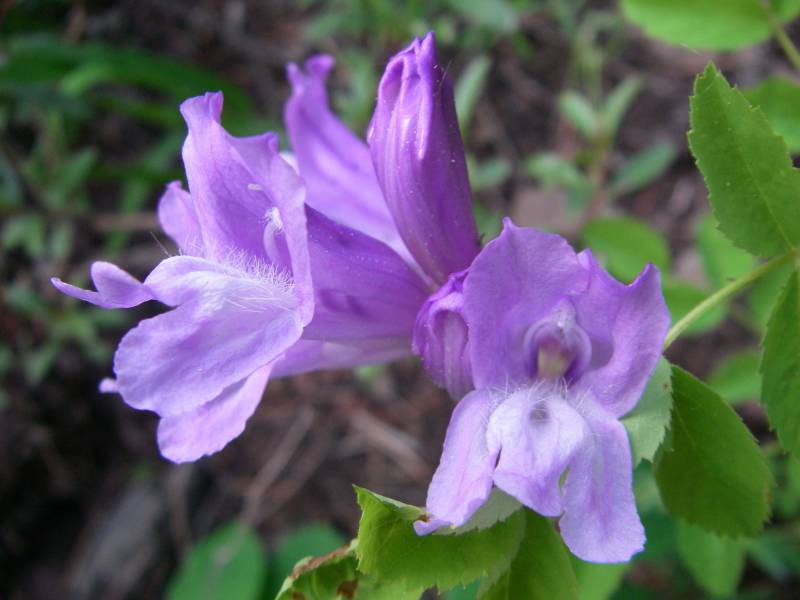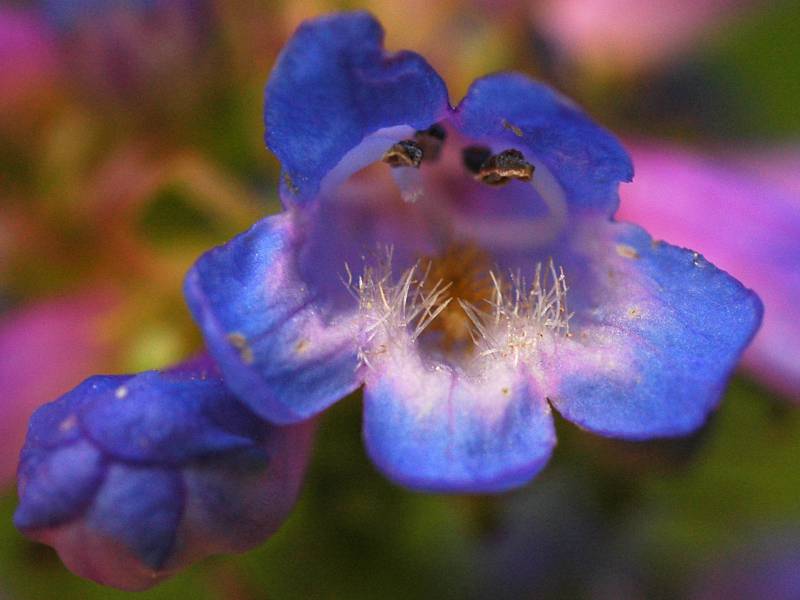Penstemon fruticosus
Penstemon rydbergii
bush penstemon, shrubby penstemon
Rydberg's beardtongue
Leaves opposite, the larger leaves crowded toward the base of the season\\\\'s growth on short, sterile shoots, the blades entire or toothed, up to 6 cm. long and 1.5 cm. wide, short-petiolate; flowering shoots with reduced and less-crowded leaves.
Leaves opposite, entire, the basal ones petiolate, oblanceolate, often forming rosettes, up to 15 cm. long and 2 cm. wide;
cauline leaves few, well-developed, sessile, not over 10 cm. long and 2 cm. wide.
Inflorescence a short, few-flowered, bracteate raceme, with simple, axillary pedicels;
calyx 7-15 mm. long, with 5 lanceolate, long-acuminate segments;
corolla blue-lavender to light purplish, 30-50 mm. long, 1 cm. wide at the mouth, keeled on the back, glabrous outside, with long, white hairs on the base of the lower lip within;
anthers long-woolly, the pollen sacs wholly dehiscent and opening wide enough to form a plane;
staminode slender, shorter than the 4 fertile filaments, long-bearded toward the tip.
Inflorescence of 1-several dense verticillasters, the flowers spreading at right angles to the stem;
calyx 3-7 mm. long, the 5 segments narrowly scarious-margined, tapering to a pointed tip;
corolla blue-purple, 11-15 mm. long, bilabiate, the tube expanded, 3-5 mm. wide at the mouth; raised portion of the lower petal bearded;
staminode usually bearded at the expanded tip;
pollen sacs glabrous, ovate, 0.6-1.0 mm. long, dehiscent throughout and becoming opposite.
Capsules 8-12 mm. long.
Capsule 5-6 mm. long.



